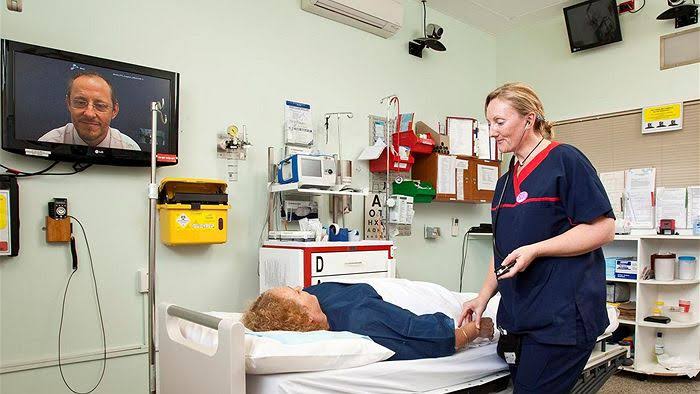Jan
15
Doctor On the Telly Treats More Than 100,000 Patients
“Since its humble beginnings in 2012, the WA Country Health Service ETS has grown to see as many patients each week as it once did annually – enough to fill 200 Qantas Airbus A380 aeroplanes.
“Almost 100 WA Country Health Service emergency doctors deliver expert medical assistance providing immediate access to specialist care, when and where it is needed.”
Health Minister Roger Cook
Described as ‘doctor on the telly’, the Emergency Telehealth Service (ETS) is transforming emergency care in Western Australia. Since it started in 2012, the award-winning initiative has supported frontline clinicians to treat more than 100,000 patients.
Imagine an almost packed Optus stadium is filled to capacity and then double it.
About the Emergency Telehealth Service
The Emergency Telehealth Service (ETS) is run by the WA Country Health Service to provide specialist emergency medical support to doctors and nurses in country Western Australia by video and voice call. It is available 24 hours a day, seven days a week to almost 80 small hospitals and nursing posts around the state.
The ETS helps address the challenge of providing access to specialist emergency care in smaller regional and remote health centres located across WACHS’s 2.5 million square kilometre reach – an area almost the size of Argentina. These centres don’t have enough emergency presentations to sustain the full-time emergency medicine specialist teams which are normally based in larger centres.
In 2019, the ETS averaged almost 400 consultations per week. It assisted more than 20,000 patients, a 20 percent increase from 2017. More than 20 percent of ETS consultations in 2019 involved children and 22 percent of presentations were as a result of injury.
The record for the most consultations in a single day is 108, with weekends and the festive season being the busiest periods as holiday-makers travel throughout regional WA.
The impact of the Emergency Telehealth Service
The ETS has enabled more than 70 percent of country patients to be treated and discharged from their local hospital, reducing the burden of travel for patients and their families. It has contributed to improved patient outcomes, improved consistency of service and standards, and increased reassurance and support for a busy and often remote regional clinical workforce.
With over 100,000 patients now having accessed the ETS, it’s clear that this service is not only helping to save lives but also significantly improving outcomes for patients being treated in regional hospitals.
Previous Story
Funding Announced for Artificial Intelligence Ideas
Next Story
World-First Study of Revolutionary North Coast NSW Treatment


 We acknowledge the traditional custodians of the land we live and work, the Bundjalung, Arakwal, Yaegl, Gumbaynggirr, Githabul, Dunghutti and Birpai Nationsand their continuing connection to land, sea and community. We pay our respects to elders past, present and future.
We acknowledge the traditional custodians of the land we live and work, the Bundjalung, Arakwal, Yaegl, Gumbaynggirr, Githabul, Dunghutti and Birpai Nationsand their continuing connection to land, sea and community. We pay our respects to elders past, present and future.
